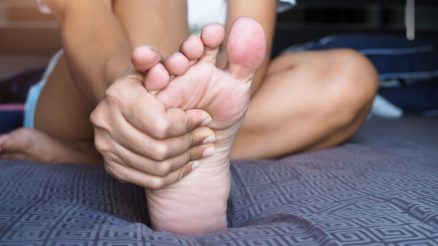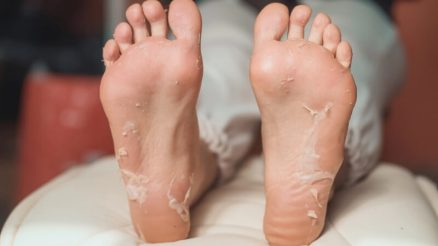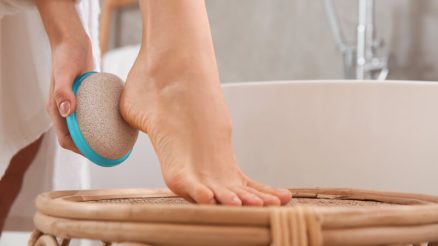Pregnancy is a beautiful journey, but it comes with its unique set of physical changes. While much attention is often given to the growing belly and morning sickness, one area that often gets overlooked is foot health. Yet, your feet bear the brunt of the extra weight and hormonal shifts, making proper foot care during pregnancy not just a luxury, but a necessity.
In this detailed guide, we’ll explore why your feet might feel different during pregnancy, common issues you might encounter, and practical tips to keep them comfortable and healthy throughout your nine months and beyond.
Why Do My Feet Change During Pregnancy?
Several factors contribute to foot changes during pregnancy:
- Increased Weight: As your baby grows, so does your body weight. This added load puts extra pressure on your feet, especially the arches, leading to fatigue and pain.
- Hormonal Changes: The hormone relaxin, which helps loosen ligaments and joints in preparation for childbirth, also affects the ligaments in your feet. This can cause your arches to flatten and your feet to spread, sometimes permanently increasing shoe size.
- Fluid Retention (Edema): Swelling, or edema, is very common in pregnancy, particularly in the ankles and feet. This occurs because your body produces more blood and fluids, and the growing uterus puts pressure on veins, impeding blood flow back to the heart.
- Changes in Gait: The shift in your center of gravity can alter your walking pattern, placing uneven stress on different parts of your feet.
Common Foot Problems During Pregnancy
Understanding the issues you might face can help you address them proactively:
- Swollen Feet and Ankles (Edema): This is perhaps the most common complaint. While mild swelling is normal, excessive or sudden swelling, especially in one leg, could indicate a more serious condition like preeclampsia or a blood clot, and should be reported to your doctor immediately.
- Arch Pain and Flat Feet: Due to relaxin and increased weight, the arches of your feet can flatten, leading to pain in the arch, heel, or even the knees and back.
- Leg Cramps: Often occurring at night, leg cramps can be excruciating. They are thought to be related to dehydration, mineral deficiencies (like magnesium or potassium), and the added strain on leg muscles.
- Ingrown Toenails: Changes in foot shape, combined with ill-fitting shoes, can increase the risk of ingrown toenails.
- Varicose Veins: The increased blood volume and pressure on veins can lead to varicose veins in the legs and feet, which can be achy and uncomfortable.
- Overheating: Your body temperature can rise during pregnancy, making your feet feel hot and uncomfortable.
Essential Foot Care Tips for Expecting Mothers
Taking proactive steps can make a significant difference in your comfort levels:
- Choose the Right Footwear:
- Comfort is Key: Opt for shoes that are comfortable, supportive, and provide good cushioning. Look for brands known for their ergonomic designs and ample arch support. Remember that your feet might increase in size, so don’t hesitate to get professionally measured.
- Low Heels: Avoid high heels, which can exacerbate back pain and throw off your balance, increasing the risk of falls. A low, stable heel (1-2 inches) or flats are ideal as they distribute weight more evenly and reduce strain on your back and ankles.
- Wide Toe Box: Ensure there’s ample room for your toes to wiggle, especially if your feet have spread. A cramped toe box can lead to bunions, hammertoes, and ingrown toenails.
- Adjustable Fastenings: Shoes with laces, Velcro, or adjustable straps are great as they can accommodate swelling throughout the day. Your foot size can fluctuate, so adjustability is crucial for consistent comfort.
- Breathable Materials: Choose shoes made from breathable materials like leather, canvas, or mesh to help with ventilation and prevent overheating and fungal infections.
- Elevate Your Feet:
- Whenever possible, elevate your feet above your heart. This simple action significantly helps improve circulation and reduce swelling by allowing gravity to assist fluid drainage. Aim for 15-20 minutes several times a day, especially after periods of standing or sitting.
- Use pillows or a footstool to prop up your feet comfortably while resting or sleeping. Even a slight elevation can make a difference.
- Stay Hydrated:
- Drinking plenty of water throughout the day is crucial. It helps your body flush out excess sodium and can significantly reduce fluid retention, which is a major contributor to swollen feet. Aim for at least 8-10 glasses of water daily.
- Gentle Foot Exercises:
- Regular, gentle exercises can improve circulation, reduce stiffness, and strengthen the muscles in your feet and ankles.
- Ankle Rotations: Sit or lie down and gently rotate your ankles clockwise and counter-clockwise 10-15 times in each direction.
- Foot Pumps: Flex your feet up and down, as if pressing a gas pedal, 10-15 times. This helps pump blood back towards your heart.
- Toe Curls: Curl your toes, then spread them wide, repeating 10-15 times. You can also try picking up small objects with your toes.
- Perform these exercises multiple times a day, especially during breaks if you’re sitting or standing for long periods.
- Regular Foot Massages:
- A gentle foot massage can provide immense relief from tension, improve circulation, and reduce swelling. You can do this yourself or ask a partner for assistance.
- Use a soothing lotion or oil (ensure it’s safe for pregnancy) and apply gentle pressure, working from your toes up to your ankles.
- Consider rolling your foot over a tennis ball or a frozen water bottle for a simple yet effective self-massage, focusing on the arch and heel.
- Compression Stockings:
- Graduated compression stockings are highly recommended, especially if you experience significant swelling or are on your feet for long periods. These stockings apply gentle pressure to your legs and feet, helping to prevent blood from pooling and reducing fluid buildup.
- Put them on in the morning before swelling sets in, and wear them throughout the day. Consult your doctor or a pharmacist for advice on the appropriate compression level.
- Soak Your Feet:
- A cool foot bath can be incredibly refreshing and effective in reducing swelling and discomfort. Fill a basin with cool water and soak your feet for 15-20 minutes.
- You can add some Epsom salts for extra relief, as they can help soothe tired muscles, but always check with your doctor first, especially if you have any underlying health conditions.
- Maintain a Healthy Diet:
- A balanced diet rich in fruits, vegetables, and whole grains is essential for managing healthy weight gain during pregnancy and providing your body with vital nutrients.
- Limit your intake of salty foods, as excessive sodium can contribute significantly to fluid retention and swelling. Opt for fresh, unprocessed foods whenever possible.
- Stay Active (with caution):
- Regular, low-impact exercise like walking, swimming, or prenatal yoga can significantly improve circulation, reduce swelling, and enhance overall well-being.
- Always consult your doctor before starting any new exercise regimen to ensure it’s safe for you and your baby. Listen to your body and avoid overexertion.
- Proper Nail Care:
- Maintaining good nail hygiene is crucial to prevent common issues like ingrown toenails. Trim your toenails straight across rather than curving the edges, and avoid cutting them too short.
- If you have difficulty reaching your feet as your pregnancy progresses, don’t hesitate to ask a partner for help or schedule an appointment with a podiatrist for professional care.
When to Seek Medical Advice
While many foot issues during pregnancy are normal, some symptoms warrant a call to your doctor or podiatrist:
- Sudden or severe swelling, especially in one leg. This could be a sign of a blood clot (DVT) or preeclampsia, both of which require immediate medical attention.
- Persistent pain that doesn’t improve with rest and home care.
- Redness, warmth, or tenderness in your feet or calves, which could indicate an infection or blood clot.
- Numbness or tingling in your feet.
- Difficulty walking due to foot pain.
- Any concerns that worry you.
Conclusion
Taking care of your feet during pregnancy is an essential part of self-care. By understanding the changes your body undergoes and implementing these simple yet effective tips, you can alleviate discomfort, prevent complications, and enjoy your pregnancy journey with happier, healthier feet. Remember, your feet are working overtime – give them the attention and care they deserve!








